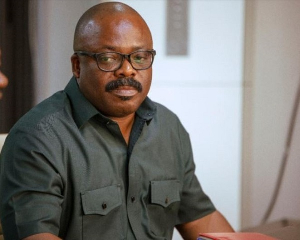Resident Health workers at the Sumbrungu Health Centre in the Bolgatanga Municipality, Upper East Region, have deserted a dilapidated quarters, they described as a death trap.
They presently commute from their various houses to the Health Centre whenever they are on duty, creating stress and adversely affecting service delivery in the area.
When the Ghana News Agency visited the facility, it was observed that the quarters was not only too small to house all the health workers posted to the facility, but was in a deplorable state and therefore endangered the lives of the occupants.
It had several cracks, with parts of the roof ripping up, while some parts of the ceiling was rotten with water collected in the rooms.
Mr Raymond Azalbila Adoganga, the Principal Physician Assistant of the Health Centre told GNA in an interview that the Sumbrungu East Sub Municipality had seven health facilities in addition to the Health Centre and with the exception of the Community Health Planning Services (CHPS) Compound at the Bolgatanga Technical University, staff accommodation of the remaining facilities were in a bad state, posing risks to them.
“We had a resident midwife, a resident General Nurse and two resident community health nurses, who were staying in the quarters, but just last week they had to park home due to the bad nature of the accommodation,” he stated.
Mr Adoganga said the staff accommodation in various facilities harboured reptiles and bees, and compelled the workers especially those who work at the Health Centre to park to their houses in Bolgatanga.
“The midwife at Azorebiisi facility, on two occasions, killed snakes on her bed and the resident community health nurse also killed one in her room and at Aguusi CHPS compound, on two occasions, I was chased away by bees. So almost all the health facilities have serious staff accommodation challenges,” he lamented.
He said although the health workers practised shift system, they usually offered back up services to those on duty especially on days and periods when the facility recorded higher attendants and emergency situations.
He said the Health Centre alone averagely recorded 60 attendants daily but during the third quarter, July, August and September, it recorded about 80 to 100 attendants each day due to the usual increase of malaria cases during the rainy season.
It served over 13,000 people each year and was also challenged with office space. The facility is a single structure with five rooms and has about four units working in one room, while the waiting area is exposed to direct sun light.
Mr Adoganga said “the only consulting room is about 10 by 10 metres, the counts unit is sharing space with the records, dressing and claims departments. When you go to the next room, we have the dispensary, the laboratory and a detention area in that single room. In the third room we have our reproductive and child health services, family planning, prevention of mother and child transmission and cold chain management while the fourth room also has four units.”
He said several appeals including; written letters were sent to the appropriate authorities including; the Municipal Health Directorate and the Bolgatanga Municipal Assembly but nothing was done.
When the GNA contacted Mr Joseph Amiyuure, the Municipal Chief Executive for the area, he admitted that the Assembly was aware of the situation of the Health Centre, but failed to comment on whether or not something would be done especially on the staff accommodation at the Health Centre.
Regional News of Thursday, 21 May 2020
Source: GNA
Health workers desert death-trap quarters at Sumbrungu
Entertainment












